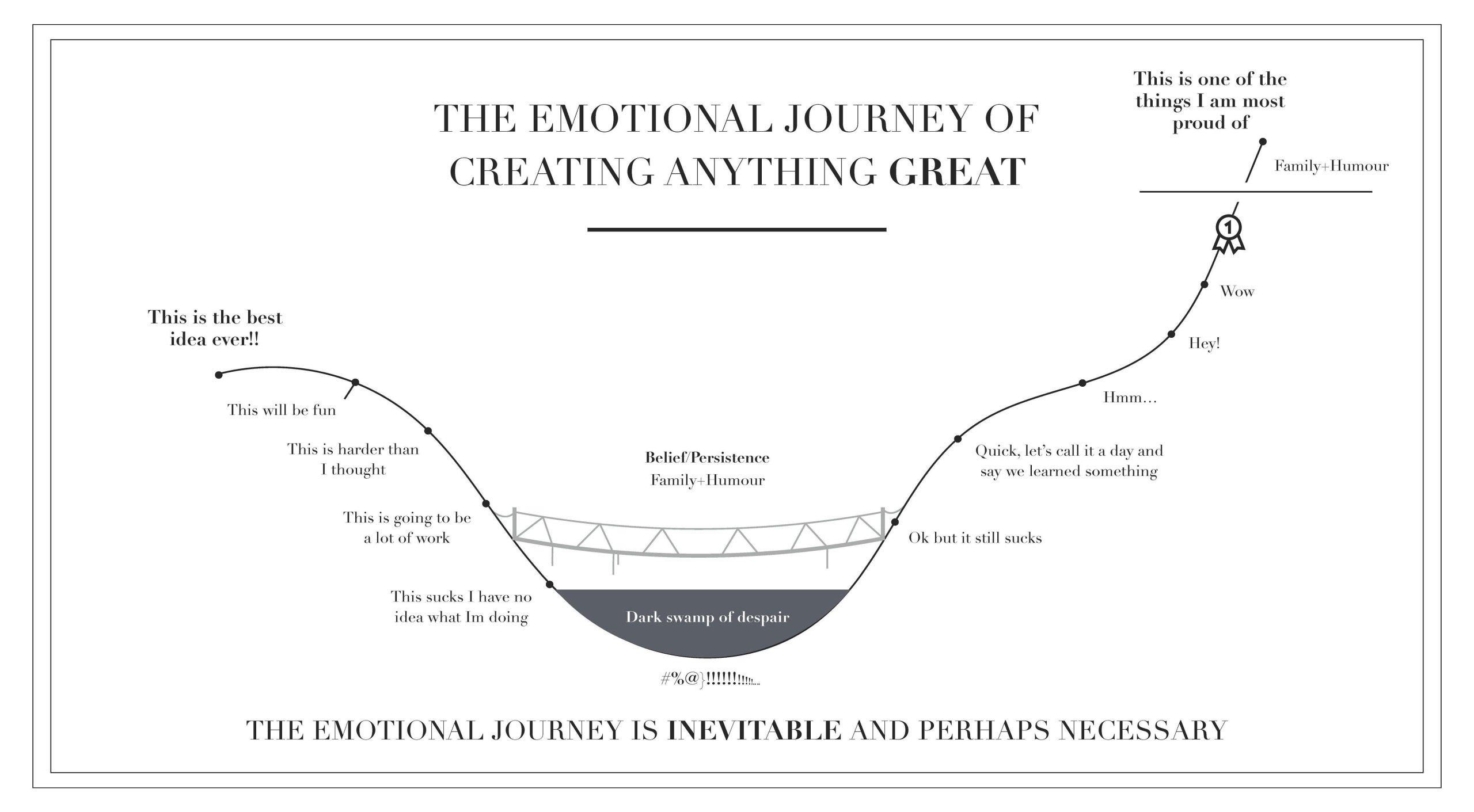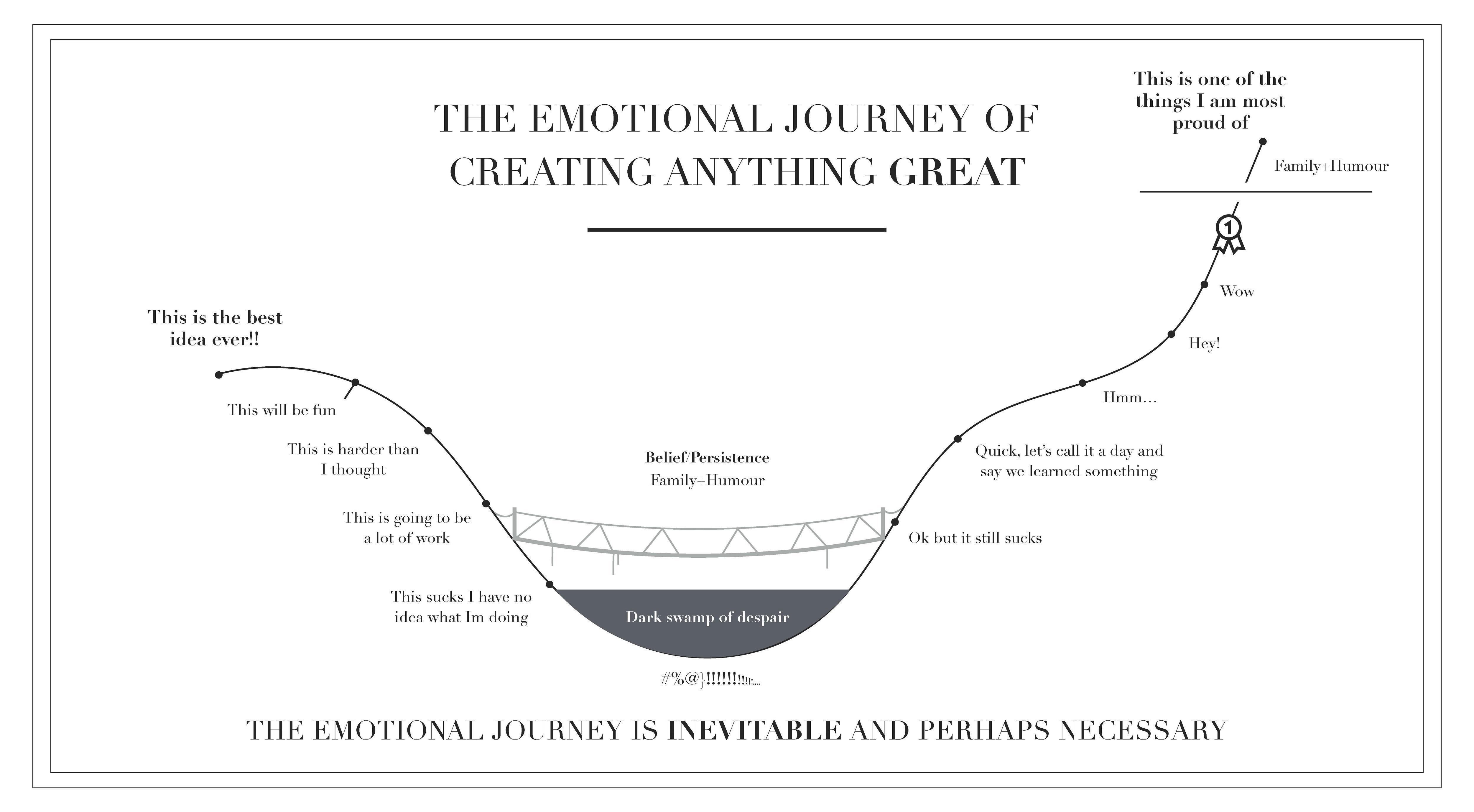The Importance of Momentum

Have you ever felt bogged down or stuck when you were trying to introduce something new? When you just felt like it was easier to give up?

At the start of an innovative project – whether it starts with a cool new idea, or with a problem that provides an opportunity to rethink how things are done – there can be a lot of energy and enthusiasm. The sense that things could be better, that there are possibilities previously unthought of, can generate real excitement and drive.
Yet unfortunately that feeling can be quickly chipped away as the project develops, as issues with the innovative project arise, as unforeseen issues come up, as the realities of implementation or action become clearer, and as various forms of resistance (unintended and deliberate) reveal themselves as it becomes apparent how this might challenge the status quo.
The project can become beset by issues that seemingly have no resolution or, if they are resolved, are quickly succeeded by yet further issues. For instance, a procurement issue limiting access to a particular software system might be followed by IT approvals, then getting people familiar with the system, then… And that might only be for a small part of the innovation itself.
So, all too soon that initial enthusiasm, that excitement, can morph into tension, into frustration, into disappointment, and maybe into resignation that perhaps this just will not be possible. Such a shift in feeling can leave the project and its advocates/instigators vulnerable to stalling, vulnerable to that sense of being stuck in bureaucratic treacle.
Unless there is a real pressure behind the project – need (including a crisis), political will, a simple but powerful realisation that things cannot continue as they are, or some other driver for change – a project can become stuck, despite its potential. This is partly why you sometimes see formal strategies or government agendas to drive innovation, to help overcome the initial hurdles that can make it hard for such projects to get off the ground. In our recent post about strategies, you can see these different strategies and how they can help provide the push needed to get such projects going.
Ideally then, if you’re trying to push such a project, you would tap into one of those drivers, something that makes it clear why the innovation is needed and that can not only push the innovation, but continue to supply it with the energy and drive it needs to overcome any hurdles. However, for a range of reasons, this is not always going to be possible for someone trying to get an innovative initiative going. It might be the wrong time, the need might be emerging and not clear to the other actors, the support may be lacking, or there might be other priorities that are seen as more important. What then?
While we are developing some guidance around how to support innovation projects, and about the skills needed for innovation, which should help, I would also suggest that one of the most important things is to think about how to provide the project with momentum.
A sense of momentum – of relentless movement – can keep an innovation project powering ahead despite the inevitable obstacles or hindrances that might be encountered. It can help infer a degree of inevitability to the project to counter any questioning, scepticism and doubts that a new project can encounter.
For example, an innovative project may come up against questions of “Why are you doing this?” or simple default responses of “We have other priorities to focus on”. A sense of momentum, of the project gaining or having push behind it, can help reshape the dynamics of such conversations. A project that has momentum will garner a very different reaction to one that is seen as undeveloped, as moving in fits and starts, or that seemingly has no support to get it moving forward.
How might such a sense of momentum be generated?
The following are some suggestions based on my own experience and observations:
- Routine (Using inertia as a strength) – this strategy involves building an innovative initiative into the existing routine, including locking in process steps that have to be met. This might be about having it as a regular item on meeting agendas, of having regular project discussions with those involved or interested, or set time every week where the project is worked on. Once something is (seen as) routine, it has its own inertia that keeps it moving along, and helps it compete against the other business-as-usual priorities or counter the processes that might work against the innovation.
- Commitment (Jump start) – if something becomes a formal commitment, it can suddenly take on an aura of inevitability that might have seemed unimaginable beforehand. Whether it be a commitment in policy, in a strategic plan, in a budget, or simply in a work plan, a commitment can jump start an innovation and provide it with that initial momentum it needs, and a sense that it has as much right to happen as any business-as-usual work. Getting an innovative initiative included as a commitment may involve working with existing business planning opportunities, getting a senior leader interested, creating a coalition of support that can advocate for the project to be happen, or connecting it to another agenda.
- Cooption (Hitching a ride) – sometimes the easiest way to gain momentum for a project is to simply “hitch a ride”, and take advantage of the existing momentum of another initiative. By finding a way to link the two, such as identifying how the innovative project can help the other process succeed, a project proponent can infuse their project with the drive that might otherwise have been lacking. Alternatively, you might hitch a ride by tethering the initiative to a crisis. Crises tend to involve a lot of activity and effort, and sometime simply linking the initiative with the crisis will provide the momentum needed, as support is given in order to respond to the crisis.
- Disrupt (Hill start/removing the wheel chock) – in some situations all that might be required to destabilise the current state is to take one small action, which will then result in cascading and growing consequences – think removing the wheel chock that’s keeping a vehicle stationary on a hill. Sometimes taking the first action with a project will then quickly lead to the next action and, before you know it, the project has picked up unstoppable momentum. In government, an unstoppable process might be a review or an inquiry or a high profile political commitment, but there are more subtle forms in the public service as well. This strategy can be high risk – did everyone understand what was involved with taking the first action and if not, who will they blame? – but it can also push an innovative project forward in a way that might not otherwise have been possible.
- Pressure (push start) – in other circumstances, it may be easiest to build up the pressure for change. This might be about working with others and building coalitions that can advocate for change, and that can help provide the push that the organisation needs but cannot generate itself. Examples include working with those dissatisfied with the status quo, identifying those that might benefit from the innovation, and mitigating the concerns of those who might suffer or lose from the innovation going ahead.
- Persistence (Sisyphus rolling a boulder up the hill) – sometimes persistence, even stubbornness or obstinacy, will be the thing that can generate the momentum. While initially others may see it as a pointless or unlikely and thankless task, in time persistence can make headway and start to convince others that, actually, maybe this is something worth a second look, maybe it is needed and could work.
None of these options are likely to be cost free – all can have consequences and the merits of each will vary depending on the context. However, that does not mean that the price will not be worth paying, as these options can help generate momentum or avoid the snuffing out of any momentum that had already developed in a project.
It’s also important to note that sometimes a project might not be deserving of momentum, or that momentum can keep a project moving forward when the context has changed, and the underlying assumptions should instead be revisited. In such cases, it might be important to try and decrease the momentum, to slow or stop a project (but that’s a topic for another post).
So if you have an innovative project that you’re trying to pursue, but don’t have an innovation strategy or agenda to rely on, or a clear priority that you can link it to, and are feeling stuck, why not consider how you might generate your own project’s momentum and help keep powering it ahead?












